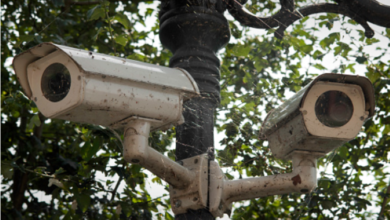Understanding the Psychology of Burglary for Home Security
KEY TAKEAWAYS
Comprehending the psychology of burglary is a critical component in fortifying our homes and ensuring the safety of our loved ones. By delving into the intricacies of the burglar’s mindset, we can more effectively identify and address potential weaknesses in our home security.
In this article, we will explore the motivations driving burglars, the various types of intruders, and the thought processes they undergo when selecting and infiltrating a target. Furthermore, we will examine the common vulnerabilities that burglars exploit and provide practical guidance on implementing robust security measures to protect our homes.
Ultimately, our aim is to empower homeowners with the knowledge and tools necessary to deter potential intruders and maintain a secure living environment for all.
The Mindset of Burglars
Gaining insight into the mindset of burglars is crucial in order to devise effective strategies for protecting our homes.
In this section, we delve into the motivations driving burglars, the various types of intruders, and the thought processes they undergo before and during a burglary. By comprehending their motives and tactics, we can better understand how to deter them.
Motivations Behind Burglaries
Burglaries are fueled by a range of motives, with financial gain being the most prevalent. For some, it serves as a quick means to secure funds for pressing needs or to maintain a lavish lifestyle.
According to the Federal Bureau of Investigation (FBI), the average monetary loss per burglary in the United States in 2020 was $2,661. However, it is important to recognize that not all burglaries are driven solely by financial incentives.
Drug addiction, for instance, can lead individuals to commit burglaries to fund their habit. Understanding these underlying motives can help us grasp the urgency and determination that some burglars may exhibit.
Types of Burglars
Burglars can be broadly classified into two categories: opportunistic and professional. Opportunistic burglars are typically driven by impulse, capitalizing on a perceived weakness in a home’s security. These individuals may lack experience or a well-thought-out plan, but they are often attracted to easy targets, such as unlocked doors or windows.
In contrast, professional burglars are more calculated, carefully selecting their targets and employing advanced techniques to infiltrate homes. These individuals may have a history of successful burglaries and possess a greater understanding of security systems, making them harder to deter.
Thought Process Before and During a Burglary
Prior to embarking on a burglary, burglars assess potential targets by considering factors such as the level of security, visibility, and overall risk. They may survey a neighborhood to learn about residents’ daily routines and identify opportune moments to strike.
Some burglars might even equip themselves with lock pick sets to discreetly bypass traditional locks. During the burglary itself, burglars remain vigilant, searching for valuables swiftly and efficiently while staying alert for any signs of detection. They may also employ specific tactics, such as taking advantage of darkness or noise distractions, to minimize the likelihood of being apprehended.
Vulnerabilities That Intruders Look For
To effectively protect our homes, it is essential to identify the vulnerabilities that intruders commonly seek out. In this section, we will examine the typical entry points and weak spots in a home’s security, as well as the assessment process burglars use to determine a home’s vulnerability.
Additionally, we will discuss common mistakes homeowners make that inadvertently make their homes more appealing targets.
Common Entry Points and Weak Spots
Burglars often exploit specific entry points and weak spots when attempting to gain access to a home. According to a study conducted by the University of North Carolina at Charlotte, 34% of burglars enter through the front door, while 23% use a first-floor window.
Furthermore, other weak spots include back doors, garages, and basement windows. These areas are targeted because they provide easy access and, in some cases, concealment from neighbors or passersby.
Identifying and reinforcing these vulnerable points in your home’s security can significantly reduce the likelihood of a break-in.
Assessing a Home’s Vulnerability
Intruders meticulously assess a home’s vulnerability by observing factors such as the presence of security systems, lighting, and visibility from the street or neighboring properties.
They may notice if a home appears unoccupied for an extended period or if it lacks signs of life, such as vehicles in the driveway or lights turned on at night. Additionally, overgrown bushes or trees near windows can provide cover for burglars, allowing them to work undetected.
Understanding how burglars evaluate a home’s vulnerability empowers homeowners to address these weaknesses and make their homes less inviting to potential intruders.
Common Homeowner Mistakes
Certain actions or oversights by homeowners can inadvertently make their homes more attractive to burglars. For example, leaving packaging for expensive items, such as electronics or appliances, visible in the trash or recycling can signal the presence of valuables inside.
Similarly, sharing vacation plans on social media or failing to halt mail delivery while away can alert burglars to an unoccupied home. By being aware of these common mistakes, homeowners can take steps to avoid inadvertently inviting intruders.
Protecting Your Home Against Burglary
Equipped with an understanding of the vulnerabilities intruders look for, homeowners can now take proactive measures to safeguard their homes. In this section, we will explore the steps homeowners can take to enhance their home security, making it less attractive to burglars.
Furthermore, we will discuss various security measures that can be implemented, from alarm systems to smart home technology, to fortify our residences against potential break-ins.
Steps to Enhance Home Security
There are several steps homeowners can take to boost their home’s security and deter burglars. For instance, installing deadbolt locks on exterior doors can substantially increase the difficulty of forced entry.
Ensuring windows are secure, particularly on the first floor, is equally important. Installing motion-activated exterior lighting can improve visibility and deter intruders by eliminating potential hiding spots. Additionally, creating the illusion of occupancy by using timers for lights or electronics can discourage burglars who prefer targeting unoccupied homes.
Making Your Home Less Attractive to Burglars
In addition to reinforcing your home’s security features, making your property less appealing to burglars can further deter criminal activity. This can be achieved by maintaining a well-kept yard, as it signals that the homeowner is vigilant and attentive.
Installing security cameras and displaying signage indicating the presence of a security system can also dissuade potential intruders.
Moreover, forging relationships with neighbors and participating in neighborhood watch programs can create an environment where suspicious activity is more likely to be reported and deterred.
Implementing Security Measures
Homeowners can further bolster their home security by adopting various security measures. Installing a monitored alarm system, for example, can provide peace of mind by alerting authorities in the event of a break-in.
Additionally, smart home technology, such as video doorbells and automated locks, can grant homeowners remote control over their home’s security features, enabling them to monitor and manage access even when away.
Combining these measures with the aforementioned steps can create a robust security system that effectively deters burglars.
Wrapping it Up
Understanding the psychology of burglary is instrumental in safeguarding our homes and maintaining peace of mind. By delving into the mindset of burglars, identifying the vulnerabilities they exploit, and implementing comprehensive security measures, homeowners can effectively thwart potential break-ins.
As a result, not only do we create a more secure environment for ourselves and our loved ones, but we also contribute to fostering safer communities.
Ultimately, the onus is on each homeowner to take proactive steps in securing their homes, as doing so is a vital investment in the safety and well-being of all who reside within.




